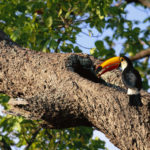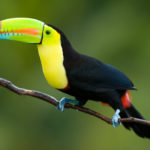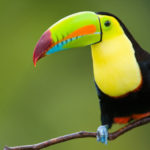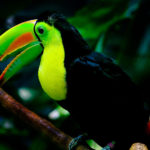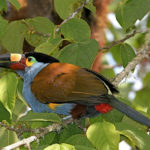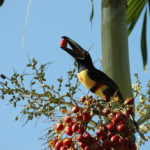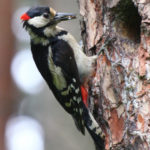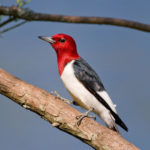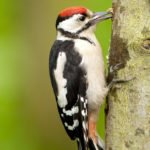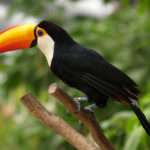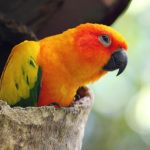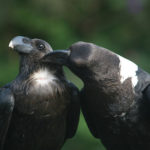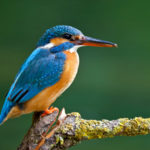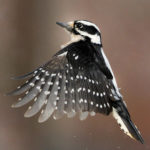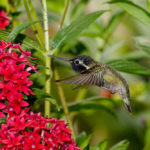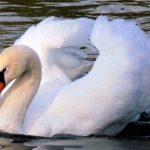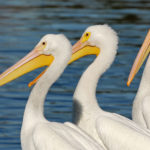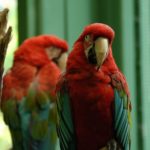Toucans
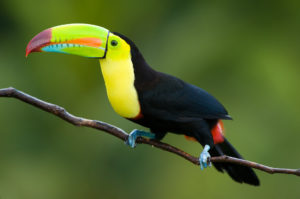 Toucans are close relatives of our woodpeckers. A distinctive feature of these birds is a huge beak. In some species it can reach half of the total body length.
Toucans are close relatives of our woodpeckers. A distinctive feature of these birds is a huge beak. In some species it can reach half of the total body length.
At first glance, the beak seems very cumbersome and heavy. But this is just an illusion. The question arises: why should a beak have such a beak? There are several reasons for this. First of all, this refers to food. Such beak sizes allow the bird to reach the long-awaited fruit hanging on neighboring branches without problems. Another feature of this part of the body is the notches along its edges, helping the bird to hold and open the fruit.
The massive beak is not as heavy as it seems. Therefore, almost no troubles from him. From the inside it consists of a multitude of empty cavities and membrane solid partitions. For clarity, the inner contents of the beak can be compared with foam. This structure gives volume, strength, but not weight. Outside, all this “foam” is covered with a thin keratin film, consisting of a set of plates of 6-shaped form.
In addition to plant food, toucans are not averse to eating insects, spiders and small lizards, and sometimes even eggs and chicks of other birds.
Another such beak serves as an identification mark for its relatives. And, finally, the beak fulfills the role of a kind of bird thermoregulator. It helps the bird to either cool or warm the body, depending on the temperature conditions and whether the bird is in flight or at rest. In hot weather or during the flight, excess heat passes into the beak, thereby reducing the thermal effect on the body.
In principle, this beak has a lot to do with it – knock on the branches, attracting attention, play and even share with your friend a delicious berry.
But to hollow out a tree, as woodpeckers do, that’s excuse me, it’s not allowed. He is not meant for this. Therefore, as houses, the toucans choose themselves abandoned hollows of woodpeckers or other cavities in trees.
In the same hollow they lay eggs, for one masonry – no more than 4 pieces. Both parents take part in hatching. Its average duration takes about 2 weeks, in larger species – a little more – about 20 days. Nestlings of toots hatch naked, blind and completely helpless. Eyes open only after 3 weeks. The first plumage also appears not soon – only a month later. Therefore, the first 2-3 months of life, the chicks are not selected at all from the nest.
Large toucans, such as a large toucan or toucan of that – fly unimportant. Begin a heavy flight. Prefer to start to rise higher, and then start planning in the right direction. Therefore, long-distance flights are not theirs. The best option for toucans is to jump from a twig to a twig.
